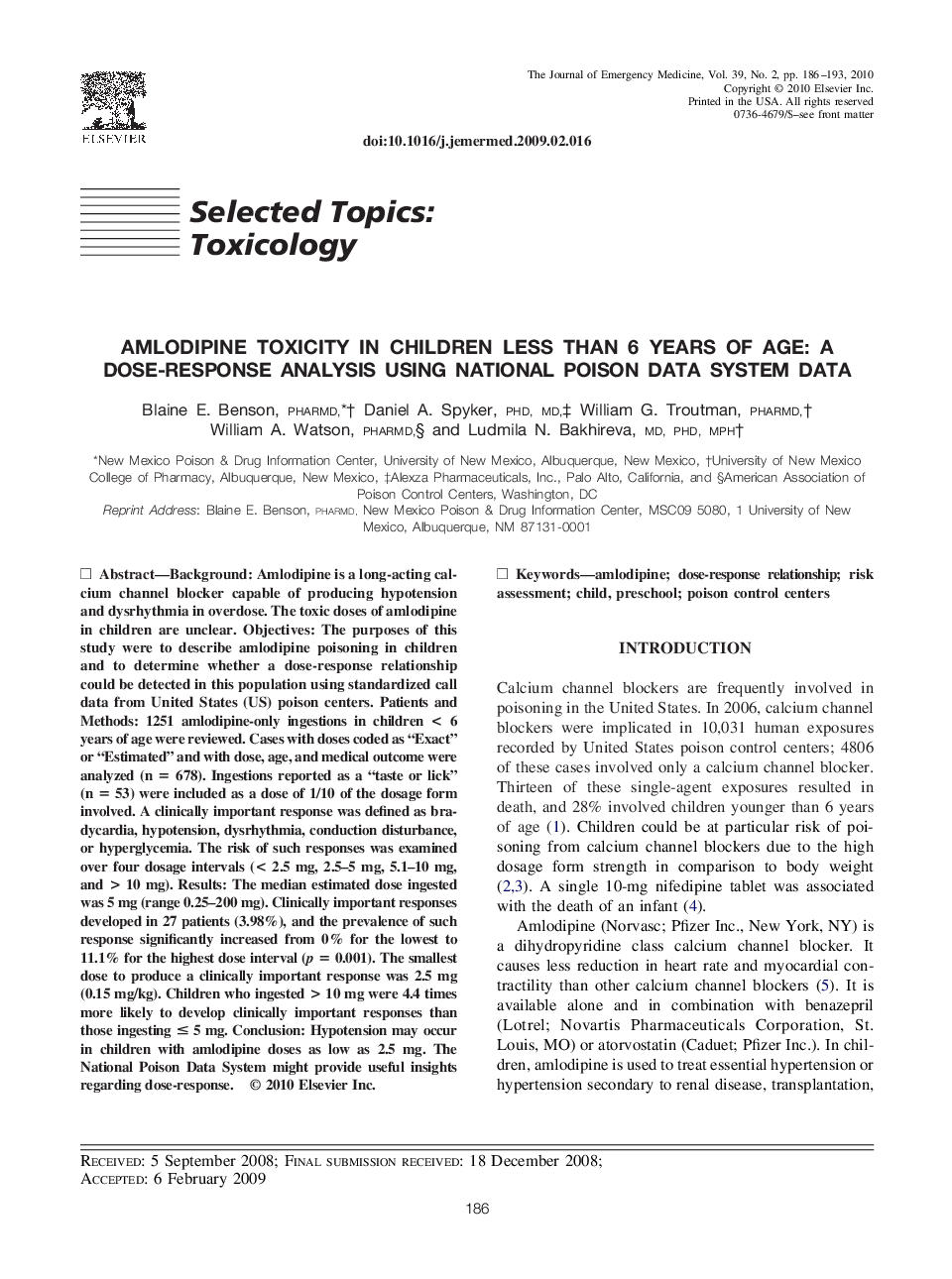| Article ID | Journal | Published Year | Pages | File Type |
|---|---|---|---|---|
| 3250307 | The Journal of Emergency Medicine | 2010 | 8 Pages |
Background: Amlodipine is a long-acting calcium channel blocker capable of producing hypotension and dysrhythmia in overdose. The toxic doses of amlodipine in children are unclear. Objectives: The purposes of this study were to describe amlodipine poisoning in children and to determine whether a dose-response relationship could be detected in this population using standardized call data from United States (US) poison centers. Patients and Methods: 1251 amlodipine-only ingestions in children < 6 years of age were reviewed. Cases with doses coded as “Exact” or “Estimated” and with dose, age, and medical outcome were analyzed (n = 678). Ingestions reported as a “taste or lick” (n = 53) were included as a dose of 1/10 of the dosage form involved. A clinically important response was defined as bradycardia, hypotension, dysrhythmia, conduction disturbance, or hyperglycemia. The risk of such responses was examined over four dosage intervals (< 2.5 mg, 2.5–5 mg, 5.1–10 mg, and > 10 mg). Results: The median estimated dose ingested was 5 mg (range 0.25–200 mg). Clinically important responses developed in 27 patients (3.98%), and the prevalence of such response significantly increased from 0% for the lowest to 11.1% for the highest dose interval (p = 0.001). The smallest dose to produce a clinically important response was 2.5 mg (0.15 mg/kg). Children who ingested > 10 mg were 4.4 times more likely to develop clinically important responses than those ingesting ≤ 5 mg. Conclusion: Hypotension may occur in children with amlodipine doses as low as 2.5 mg. The National Poison Data System might provide useful insights regarding dose-response.
